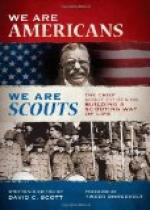While we ate dinner, I asked Jim how many Antelope were killed by the whole party. He answered. “Why, dog gone it, I forgot to count them, but I know this much. Pretty near all of the men brought two across his saddle, and I will bet that it was the biggest Antelope hunt that was ever in this country before. Why, Will, the Antelope came along so thick at one time that a man could have killed them with rocks.”
If the reader will stop to think a moment, I think he will be surprised at the great change that has taken place in that country in fifty years. At that time there was not a white family living within two hundred miles of this place, and if there had been any one brave enough to tell us that in a few years this would be a settled country, we would have thought he was insane. And just think, this very spot where the wild Antelope roamed in countless numbers fifty-five years ago is today Nevada’s most prosperous farming country and is worth from fifty to one hundred dollars an acre, and the city of Reno, now a flourishing town of several thousand inhabitants stands on the very spot where we camped and had the Antelope hunt, and I have been told by reliable people that the whole country from the city of Reno to Honey Lake is thickly settled, and that cities and villages and thriving farms now cover the ground where at the time I am speaking of there was nothing but wild animals, and what was worse to contend with, wild savages lurking in the thick sage brush which covered the ground for hundreds of miles, and I am also told that the whole country around Honey Lake is a thriving farming country, but at the time I am speaking of, we did not have an idea that it would ever be settled up with Whites or used for anything but a feeding ground for wild animals. If we had been told at that time that a railroad would pass through the place where the city of Reno now stands, we would have thought the one who told us such a wild, improbable story to be a fit subject for a straight jacket.
We pulled out of there early Monday morning; we took the trail up Long Valley towards Honey Lake, which we reached on the evening of the third day. Nothing occurred to disturb us during this time. As soon as we went into camp that evening the emigrants got out their fishing tackle and went to the lake. Some of them caught some fish, but many of them came back disappointed. None had the luck they’d had at Truckee river. Still, the most of us had some fish for supper that night.
While we were at supper, Jim told the people that they were through catching trout, that the next fish we had would be salmon. They said they had never heard of that kind and asked what it looked like. Jim told them that the meat of some kinds of salmon was as red as beef, while another kind was pink, and still another kind was yellow, and they were considered the finest fish that swim in the water, and he continued, “I have seen them so thick in the spring in some of the streams in California that it was difficult to ride my horse through them without mashing them, and they ran against the horse’s legs and frightened him so that he was as eager to get away from them as they were of him.”




